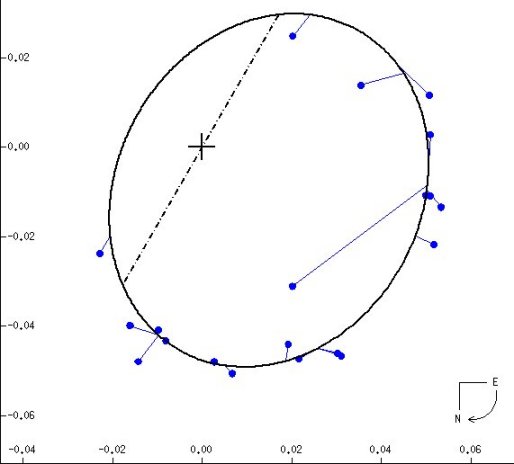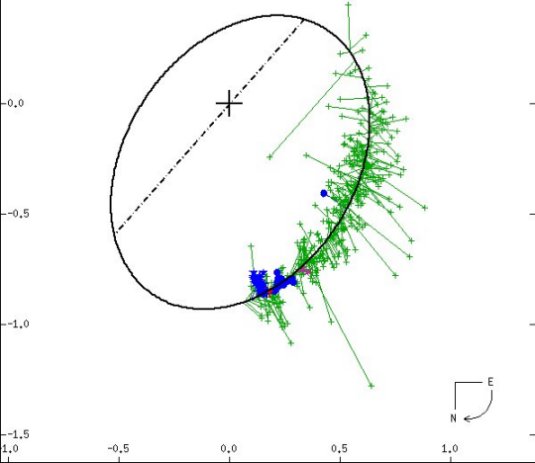

 |
 |
| At left, Lambda Cygni Ab and Aa closely orbit each other (note the scale, in seconds of arc) every 11.6 years at an average distance of 11.3 AU, brighter Aa at the cross, Ab seen as going around Aa. At right, Lambda Cyg B goes around AaAb with a 391 year period separated on average by 183 AU. The orbits are rather eccentric. The major axes of the true ellipses (dot-dash lines) and the orbital foci are offset from the apparent ellipses because of the orbital tilts to the plane of the sky. From the Sixth Catalog of Orbits of Visual Binary Stars , W. I. Hartkopf and B. D. Mason, US Naval Observatory Double Star Catalog, 2006. | |